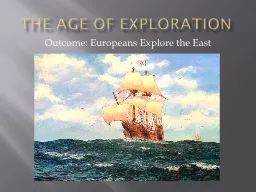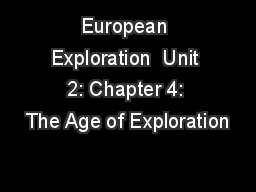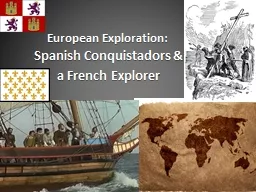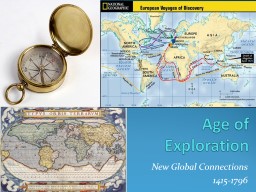PPT-Spanish Exploration in
Author : cheryl-pisano | Published Date : 2019-11-22
Spanish Exploration in Texas The Search for Gold God and Glory Mr Wayne E Davidson MEd Da Vinci School for Science and the Arts The Arrival of Spain in Texa s Earliest
Presentation Embed Code
Download Presentation
Download Presentation The PPT/PDF document "Spanish Exploration in" is the property of its rightful owner. Permission is granted to download and print the materials on this website for personal, non-commercial use only, and to display it on your personal computer provided you do not modify the materials and that you retain all copyright notices contained in the materials. By downloading content from our website, you accept the terms of this agreement.
Spanish Exploration in: Transcript
Download Rules Of Document
"Spanish Exploration in"The content belongs to its owner. You may download and print it for personal use, without modification, and keep all copyright notices. By downloading, you agree to these terms.
Related Documents













![[EBOOK] Getting Started with Spanish: Beginning Spanish for Homeschoolers and Self-Taught](https://thumbs.docslides.com/1008295/ebook-getting-started-with-spanish-beginning-spanish-for-homeschoolers-and-self-taught-students-of-any-age-homeschool-spanish-teach-yourself-spanish-learn-spanish-at-home.jpg)
